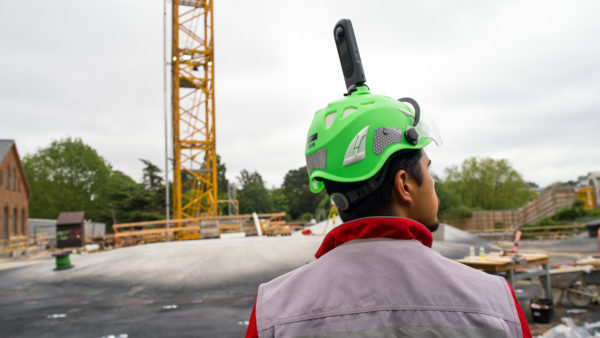Dale Sinclair, director of innovation, EMEA at Aecom, looks forward to unlocking innovation in the planning process and envisions submitting a model with a wealth of data that can be viewed in context rather than a set of drawings – the outcome will be more informed and swifter consents.
What in your view changed in terms of use of digital in construction and design in 2020?
Without a doubt, 2020 was the year of video-conferencing. Most of our teams were already leveraging these technologies and working in the cloud, but our biggest challenge was moving everything into this virtual environment as we experimented with different ways of conveying ideas and comments to each other. Mural has proven to be a fantastic collaboration tool, helping drive the most unexpected and inspiring of results.
I’m a big fan of proactive coordination (clash detection is reactive), so we’ve been using VR for coordination on some major projects. The ability to bring team members inside our models from their homes to discuss design and collaboration issues has blown me away.
We’ll be honing these processes next year. Finally, we’ve realised that we really can bring together the best teams from anywhere in the world and I’m really looking forward to a broad range of collaborative international efforts next year.
What technologies do you see coming into their own in 2021 – and why?
Our most exciting developments are currently those where we’re taking off-the-shelf software and using it in new ways: using APIs to help automate workflow or better leverage the model and its data, for example, or developing a client spacer viewer that creates a more intuitive user experience.
What are you looking forward to trialling/bringing on board in the coming 12 months?
We’ve been building up our digital libraries in a number of sectors. By creating construction and/or manufacture ready spaces holding a wealth of data, that can be instantly pulled into the model at RIBA Stage 2, we can begin the design process with a much higher level of detail and start the process of automating downstream design activities. We’re already seeing clients take more of a programme approach and this dovetails well with that, helping to streamline decision-making processes because we are more informed.
What barriers do you see holding back new technologies and how might these be lifted?
We had a number of roundtables across the UK with clients prior to the lockdown about the impact of technology and their view was unanimous. The planning process is still their biggest challenge and can wipe out any efficiencies made during the design process.
Unlocking innovation in the planning process is therefore central to unlocking innovation elsewhere. The number of companies providing city models is increasing, so there is a good chance that we will start to see some pilot projects next year. Imagine submitting a model with a wealth of data that can be viewed in context rather than a set of drawings: the outcome will be more informed and swifter consents.
One to watch:
My one to watch is the Internet of Things. Digital twin and smart building technologies rely on data lakes fed from an array of building sensors. These technologies have been maturing at pace this year and we can expect to see a lot of exciting articles and emerging case studies next year as the environmental benefits of whole-life thinking become clear to all.











